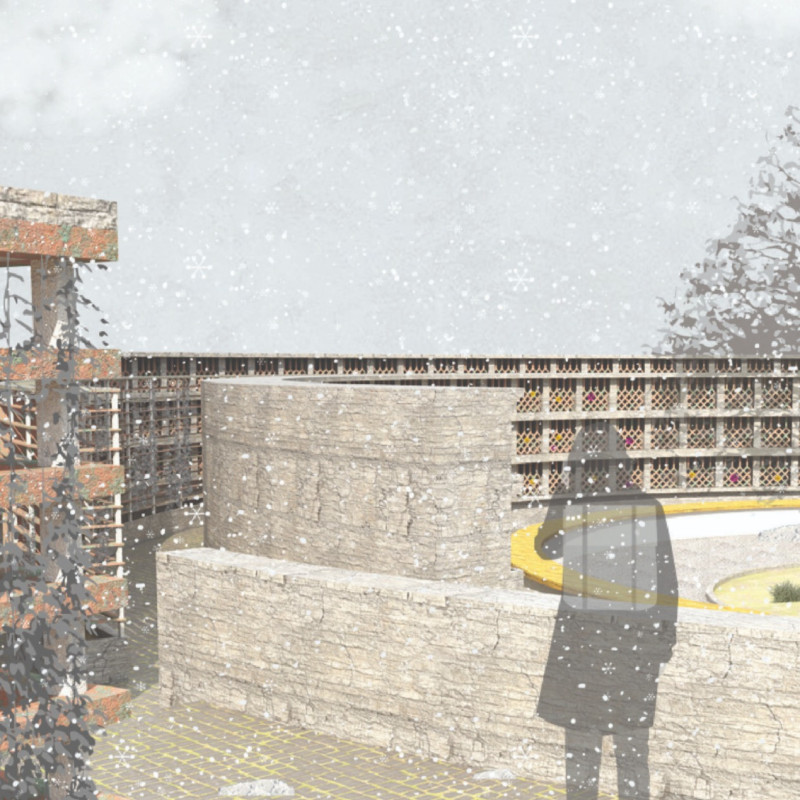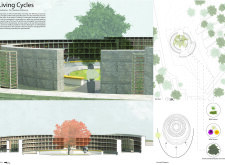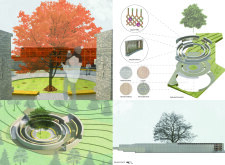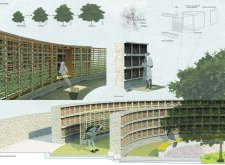5 key facts about this project
Sustainability is a critical aspect of this project. The materials chosen—dolomite stone, copper, reclaimed wood, and permeable pavers—are not only visually appealing but also environmentally responsible. The dolomite stone provides structural support, while the copper develops a patina over time, reflecting the passage of time. Reclaimed wood adds warmth and historical context, and permeable pavers enhance the landscape's ecological function by allowing rainwater infiltration.
One distinguishing feature of this columbarium is its integration of a Small-leaved European Lime tree, symbolizing endurance and vitality. The tree acts as a central focal point, offering a connection to nature and creating a dynamic backdrop that changes with the seasons. This design allows visitors to experience the environment in varying sensations throughout the year, reinforcing the themes of memory and continuity.
The arrangement of spaces within the columbarium is thoughtfully planned. Integrated bench seating promotes comfort and reflection, encouraging visitors to engage with the environment. The copper trellis fosters plant growth and adds a structural element that enhances the aesthetic appeal. The inclusion of wild grasses and wildflowers further supports biodiversity and enriches the sensory experience.
Furthermore, the circular design promotes inclusivity and free movement, encouraging visitors to explore the space at their own pace. This layout not only supports individual reflection but invites communal remembrance, enhancing the overall experience of the columbarium.
For those interested in the architectural philosophies and practical implementations behind the "Living Cycles" columbarium, further exploration of the project presentation is encouraged. Detailed architectural plans, sections, and designs provide deeper insights into its unique architectural ideas and design strategies.


























